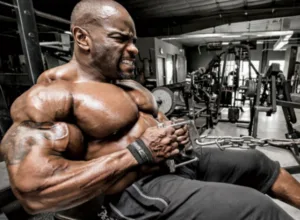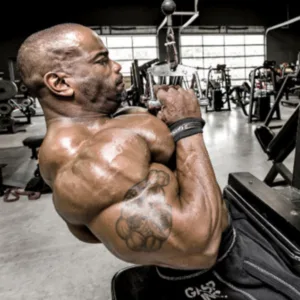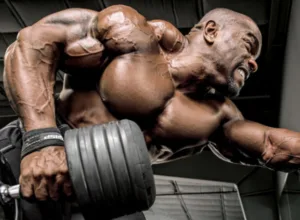A well-developed back is more than just aesthetics; it’s a foundation for good posture, improved athletic performance, and overall strength. It contributes to that coveted V-shaped physique and speaks volumes about dedication and discipline. But transforming your back from “meh” to “marvelous” requires a strategic approach.
A big, thick, well-developed back can elevate a physique from good to great. Sadly, the muscles of the back are the ones that most lifters struggle to develop the most.
Stimulus + Recovery = Adaptation
Worry not, aspiring back enthusiasts, for this guide will equip you with the knowledge and tools to achieve your back-building goals.

 Understanding Your Back Muscles
Understanding Your Back Muscles
The back is comprised of a complex network of muscles, each playing a crucial role. Here are the key players:
- Latissimus dorsi (Lats): These large, broad muscles form the “wings” of your back and are responsible for pulling movements.
- Trapezius (Traps): These diamond-shaped muscles run along the upper back and neck, aiding in posture and shoulder movement.
- Rhomboids: Situated beneath the traps, these muscles help retract the shoulder blades and maintain good posture.
- Erector spinae: This group of muscles runs along the spine and is responsible for spinal stability and extension.
Building a Strong and Defined Back: Training Strategies
1. Compound Exercises: The Backbone of Back Development
Compound exercises, those that work multiple muscle groups simultaneously, are the cornerstone of back training. Here are some stellar choices:
- Pull-ups/Chin-ups: The kings of back exercises, these target your lats, biceps, and core. Start with assisted variations if needed and progress to full bodyweight pulls/chins.
- Barbell rows: An incredibly versatile exercise, barbell rows can be done with various grips (underhand, overhand, wide, close) to target different back muscles.
- Seated cable rows: Offers great control for targeted back development, allowing you to focus on specific muscle groups.
2. Don’t Neglect Isolation Exercises
While compound exercises are essential, incorporating isolation exercises can further sculpt and define your back:
- Face pulls: Excellent for activating the rear deltoids and strengthening the rotator cuff, contributing to a wider back appearance.
- Dumbbell rows: Offer a wider range of motion compared to barbell rows, allowing for greater focus on individual lats.
- Reverse flyes: Target the rhomboids and traps, leading to improved posture and a more defined upper back.
3. Progressive Overload: The Key to Growth
Your back muscles need a constant challenge to grow. Here’s how to achieve progressive overload:
- Increase weight: Gradually increase the weight you lift over time, aiming for a rep range of 8-12 repetitions where the last few reps are challenging.
- Increase sets: Once you can comfortably perform the desired reps with a weight, add another set to your workout.
- Decrease rest time: Shorten rest periods between sets (30-60 seconds) to increase metabolic stress and encourage muscle growth.
4. Prioritize Proper Form
Form is paramount for maximizing results and preventing injuries. Don’t chase heavy weights at the expense of proper technique. Focus on feeling the target muscles working throughout the movement.
5. Consistency is Key
Building a well-developed back requires dedication. Aim for 2-3 back workouts per week, allowing for proper rest and recovery between sessions.
-
Train Your Back
-
Train Your Lats
Check Out Our List Of The Best Supplements For Building Muscle, Shredding Muscle, Recovery, And Great Health, and Wellness Products! Purchase ifbnewsfeed.org‘s apparels Here: ifbnewsfeed.org

 To do this effectively for your lats:
To do this effectively for your lats:
- Initiate the lifting phase of a pulldown or lat focused row by driving your upper arm down.
- Don’t lead by pulling with your biceps.
- Think of your hands as hooks.
- The lats attach onto the upper arm, not past the elbow.
- Focusing on bending the elbow will shift the emphasis onto the biceps.
-
Train Your Upper Back
Fueling Your Back Transformation: Nutrition
Muscles need proper fuel to grow and recover. Here’s what your diet should prioritize:
- Protein: Protein is the building block of muscle. Aim for 0.8-1 gram of protein per pound of bodyweight daily. Lean meats, fish, eggs, and dairy are excellent protein sources.
- Complex Carbohydrates: These provide sustained energy throughout your workout and fuel muscle recovery. Choose whole grains, fruits, and vegetables.
- Healthy Fats: Healthy fats are essential for hormone production and overall health. Include sources like avocados, nuts, and seeds in your diet.
Rest and Recovery: The Silent Partner
Muscles grow and repair during rest periods. Here are some recovery tips:
- Get enough sleep: Aim for 7-8 hours of quality sleep per night.
- Active recovery: Include low-intensity activities like light cardio or yoga on non-training days to aid in recovery.
- Stretching: Stretching helps improve flexibility and range of motion, which can benefit your back training and overall well-being.

 Wrapping Up
Wrapping Up
The back is a crucial muscle group, not just for aesthetics but also for posture, core strength, and overall athletic performance. A well-developed back boasts a defined V-shape, improves your physique, and bolsters your ability to perform lifts and activities that engage your posterior chain.
More About Building a Back Workout Routine Contents
- How To Build A Massive Back With T-Bar Rows: “How-To, Muscles Worked, And Variations”
- The “10 Best Back Exercises” For Men To Build A Shredded V-Taper Back
- Best Back Exercises For Building Muscle Strength and Size

- A1Supplements.com – America’s Favorite Supplement Store.
- Shop Optimum Nutrition Energy: Anytime & Pre-Workout
- A1Supplements.com – Lose Fat, Gain Muscle
- Dive Into Our Bestselling SUPs
For More News And Daily Updates, Follow IFBNewsfeed.Org™🇺🇸 on Facebook, Twitter, and Instagram. Comment, Like, And Share With Everyone Who May Need To Be Updated With The Most Recent Fitness/Bodybuilding/Powerlifting And CrossFit News.










